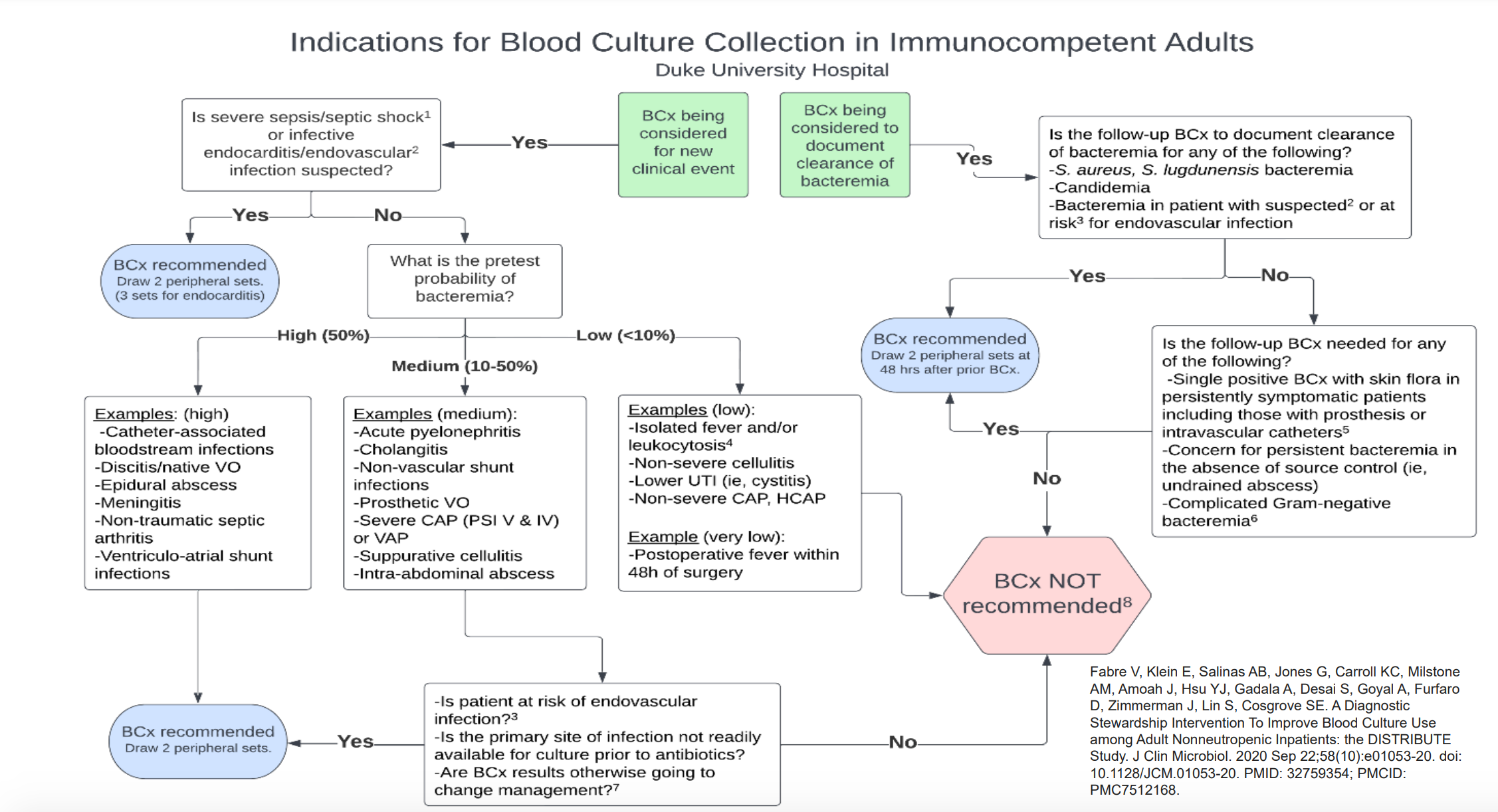Introduction of an algorithm to help determine the necessity of a blood culture in immunocompetent patients seen in an emergency department helped significantly reduce the amount of unnecessary blood culture events, yielding improved clinical and health care resource outcomes.
The findings were presented in an oral session by Jessica Seidelman, MD, MPH, of Duke University School of Medicine, at IDWeek 2023, taking place October 11-14 in Boston, Massachusetts.
Seidelman and colleagues set out to improve diagnostic stewardship surrounding blood cultures, which are typically collected in an emergency department setting even in low-risk patients. This over-extension can result in false-positives, extensive health care resource use, as well as increased length of stay and excessive use of antibiotics and other diagnostic procedures. They compared blood culture diagnostics via a prospective cohort study that utilized baseline data from historical controls and compared it to charted interventions following introduction of the algorithm.
The algorithm was based on 2 clinical scenarios: a blood culture being considered for a new clinical event; or a blood culture being considered to document clearance of bacteremia. (See algorithm below)
Notably, the algorithm emphasized identifying individuals at high risk of sepsis, infective endocarditis/endovascular infection; those with a high probability of bacteremia, including a history of epidural abscess, meningitis, septic arthritis, catheter-associated bloodstream infections, discitis, and ventriculo-atrial shunt infections; and those with a history of bacteremia associated with S aureus, S lugdunensis bacteremia, candidemia, or those with positive culture with skin flora or complicated Gram-negative bacteremia.
The investigators conducted weekly chart reviews to determine clinically appropriate blood culture events (BCE) in adults. Notably, those who were neutropenic or those with heart or lung transplants were excluded.
Key Takeaways
- Algorithm Reduces Unnecessary Blood Cultures: This reduction resulted in improved clinical outcomes and the more efficient use of healthcare resources.
- Algorithm Criteria: The algorithm was designed to identify patients at high risk of sepsis, infective endocarditis/endovascular infection, or bacteremia. It emphasized factors such as a history of specific infections, including epidural abscess, meningitis, septic arthritis, and others, as well as specific types of bacteremia.
- No Negative Outcome Measures: A 13% decrease in the rate of BCEs followed the algorithm's implementation. True positive results increased post-intervention, and increase in antibiotic use or hospital readmission rates were observed.
Following the introduction of the algorithm intervention, there was a 13% decrease in the rate of BCEs compared with baseline (BCE rate: 14.45/100 ED admissions vs 12.41/100 ED admissions; 95% CI, –21% - –0.1%; P =.04). The rate of BCEs continued to decrease in the post-intervention period (additional 0.8% decrease; 95% CI, –2% - –.4%, P = .09). True positives were increased post-intervention (13.9% vs 11.23% pre-intervention; P <.001).
Overall, 3481 BCEs were reviewed, with 69% being deemed appropriate, 28% not appropriate, and 3% unclear from documentation. Of the 1730 BCEs adjudicated, 448 were deemed inappropriate BCE. The reasons most commonly cited for nonadherence to the algorithm were among those in the "low or very low risk" category, including isolated fever or leukocytosis (29%), non-severe community-acquired pneumonia or health care-associated pneumonia (6.9%), and non-severe cellulitis (4%).
Additionally, no negative outcome measures, including antibiotic days of therapy or 30-day hospital readmission rates, were observed.
The study authors noted that although effective, the intensive chart review required a lot of resources. As such, they suggest evaluating the effects of the algorithm intervention in a community hospital emergency department setting without intensive chart review to compare outcomes.
Click here for more coverage of IDWeek 2023.
REFERENCE
Seidelman J, Theophanous R, Ramos J, et al. Implementation of a blood culture algorithm in emergency department patients as a diagnostic stewardship intervention. Presented at: IDWeek 2023. October 11-14, 2023; Boston, MA. Abstract 91.


